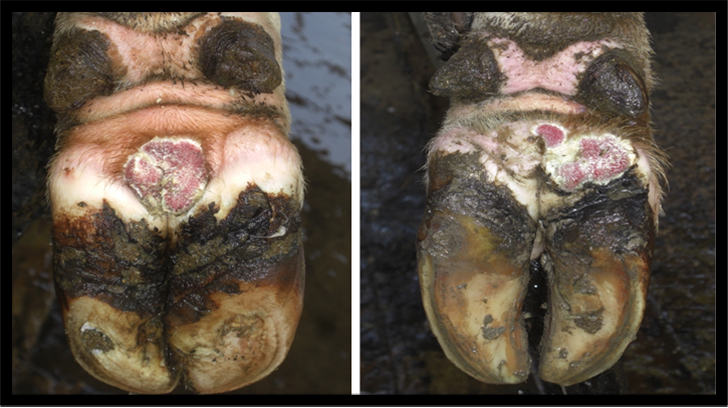New Reservoirs Niches to Digital Dermatitis-associated Treponema Species in Dairy Cows

The following research focuses on studying the presence of the bacterium Treponema spp. and its transmission among cattle in order to control it and reduce the cases of digital dermatitis it causes. Specifically, it was observed in the interdigital cleft of the healthy cow plant, in the udder cleft and in the first lactating milk of the cows, all three identified as places where infectious agents concentrate. Results of dermatitis caused by the bacteria T. phagedenis and T. pedis distributed in different proportions, in these three locations, were also obtained.
We carried out this study to identify and characterize the potential reservoir niches for digital dermatitis (DD)-associated Treponema spp. from healthy udder cleft skin and foremilk in lactating dairy cows using nested PCR assays and DNA sequencing. The findings of this study would boost our understanding and knowledge for the transmission of DD-associated Treponema spp. in dairy farms and that indeed will enhance the current control strategies for minimizing the contagious spread of DD in dairy cattle populations.
A large dairy farm was visited weekly from March to July 2015. Clinical investigation revealed that a total of 25 lame cows had DD lesions located at the plantar aspect of the interdigital cleft. A total of 75 samples, three per cow, were collected including deep swabs* from DD lesions (n = 25), non-aseptically collected foremilk samples (n = 25) and skin swabs from udder cleft (n = 25). Treponema spp. were identified using nested PCR assays and confirmed by DNA sequencing.
Our findings revealed that Treponema phagedenis (T. phagedenis)–like was the most identified species in the foremilk 40% (10/25), in comparison with DD lesions and udder cleft skin samples with 32% (8/25) and 20% (5/25), respectively. On the other hand, Treponema pedis (T. pedis) was the most identified species in the udder cleft skin 80% (20/25), in comparison with DD lesions and foremilk samples with 68% (17/25) and 60% (15/25), respectively. None of the examined samples were identified by the Polymerase Chain Reaction (PCR) method as containing DNA from Treponema medium (T. medium) or Treponema vincentii (T. vincentii)–like.
We concluded that DD Treponema, T. phagedenis–like and T. pedis, can be detected in the healthy skin of udder cleft and foremilk samples suggesting that these niches are potential reservoirs for spirochetes involved in DD. Udder cleft skin and milk may have a role in transmission routes of DD Treponema in dairy farms.
Article published on the blog "CReSA & the city".
*Piece of cotton and wood prepared for skin sampling.
Yasser Mahmmod1,2,3
1 Researcher at the Endemic Diseases Subprogram. IsDB Merit Research Fellow.
2 Marie Sklodowska-Curie Researcher at IRTA-CReSA.
3 Department of Animal Health and Anatomy, Animal Health Area. Universitat Autònoma de Barcelona (UAB).
References
Sobhy NM, Mahmmod YS, Refaai W, Awad A. Molecular detection of Treponema species organisms in foremilk and udder cleft skin of dairy cows with digital dermatitis. Trop Anim Health Prod. 2019 Sep 13. doi: 10.1007/s11250-019-02072-0.
CReSA and the City Blog. IRTA, Research and food Technologies: http://www.cresa.cat/blogs/sociedad/es/dermatitis-digital-bacteri-treponema-vaques-lleteres/


